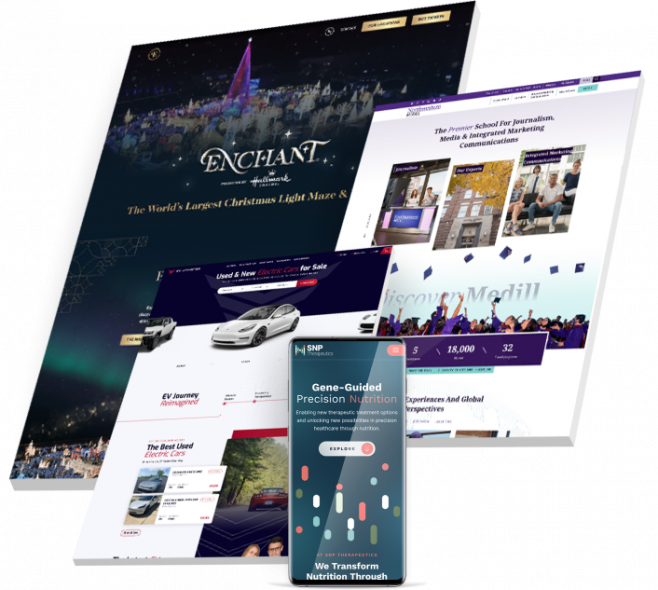Modern Internet Site Layout That Records Focus and Converts
In a progressively digital landscape, contemporary web site design has actually become a crucial consider recording individual attention and driving conversions. By tactically utilizing aesthetic pecking order, responsive layouts, and engaging interactive components, designers can create experiences that not just draw in site visitors but likewise assist in purposeful communications. Moreover, reliable call-to-action approaches play an important function in leading individuals towards desired end results. As we check out these essential components, it ends up being clear that understanding their interplay can dramatically affect a web site's efficiency and individual contentment. What are the crucial elements that genuinely make a distinction?
Significance of Visual Power Structure
Aesthetic power structure is an important aspect in internet site design, as it guides individuals' focus and improves their total experience. By tactically arranging web content, designers can direct users to the most vital details initially, therefore raising engagement and improving usability.
Including a rational circulation in content plan is vital; as an example, positioning one of the most critical info on top of a page promotes instant acknowledgment. Constant use of typography, such as differing font dimensions and designs, assists develop a clear web content structure. This company not only aids in navigating but additionally constructs trust fund, as customers really feel a lot more comfy when they can easily find what they are trying to find.
Eventually, a well-executed aesthetic pecking order not only improves visual appeal yet also significantly impacts individual habits. By prioritizing vital elements and making sure a smooth experience, designers can effectively transform visitors into clients, strengthening the importance of this foundational layout concept in modern-day internet site growth.
Responsive Layout for All Gadgets
Developing a seamless experience across numerous tools is necessary in today's digital landscape, where users gain access to web sites from mobile phones, tablets, and desktop computers alike. Responsive style is an essential method that ensures sites adjust fluidly to various screen resolutions, alignments, and sizes. By utilizing adaptable grids, pictures, and CSS media queries, designers can create formats that preserve aesthetic integrity and capability, no matter the device being made use of.
The significance of responsive style extends beyond looks; it directly influences user involvement and conversion rates. An internet site that functions well on all gadgets motivates longer gos to and minimizes bounce prices, as users are more probable to communicate with content that is very easy to navigate. Moreover, search engines, specifically Google, prioritize mobile-friendly websites in their rankings, making responsive layout an essential component of search engine optimization (SEO)
Incorporating receptive design not only improves individual experience yet additionally streamlines the growth process. By producing a solitary site that works throughout tools, companies can conserve time and resources contrasted to developing different mobile and desktop computer variations. Ultimately, responsive layout is an essential strategy for modern internet site layout, guaranteeing availability and satisfaction for all users, no matter of their tool.
Involving Interactive Aspects
While a responsive design prepares for a useful internet site, including interesting interactive components is vital for recording individual interest and fostering deeper links. Website Design. Interactive elements, such as computer animations, quizzes, and clickable infographics, create a much more vibrant customer experience, motivating site visitors to spend even more time on the site
Incorporating interactive attributes can likewise direct customers via complex details, making it much easier to absorb web content. For instance, interactive sliders can show item variations, while ingrained video clips Recommended Site can provide demonstrations or reviews that reverberate greater than static images or message. Additionally, gamification strategies, like rewards for completing jobs or engaging with web content, can boost user motivation and retention.
Reliable use of interactive components not only enhances the customer experience but can additionally cause greater conversion prices. By making interactions pleasurable and useful, services can grow a sense of loyalty and depend on with their audience. Nevertheless, it is important to stabilize interactivity with performance; overly complicated features might prevent website speed, adversely affecting customer satisfaction. Eventually, integrating well-designed interactive components can substantially raise a site's efficiency, driving engagement and conversions in today's competitive electronic landscape.
Structured Navigating Practices
Efficient navigating is a foundation of any kind of effective web site, as it straight affects individual experience and material ease of access. Streamlined navigating practices guarantee that users can quickly find details, improving their communication with the site. A well-structured navigating menu ought to be user-friendly and simple, usually including a minimal number of primary groups to prevent overwhelming site visitors.
To attain structured navigation, developers need to prioritize a hierarchical framework that practically organizes material. Implementing breadcrumb tracks can supply customers with context about their present area within the site, allowing for smooth backtracking. In addition, using drop-down food selections can properly conserve area while still providing access to subcategories.
Receptive style is important, as navigating needs to be practical throughout all tools (Website Design). Mobile users, specifically, gain from touch-friendly food selections and collapsible areas that maintain use without compromising appearances

Effective Call-to-Action Strategies
A well-crafted call-to-action (CTA) is vital for assisting individuals toward desired outcomes on a site, as it motivates them to engage with content or purchase. To optimize their performance, CTAs view it now should be clear, engaging, and tactically positioned throughout the website.
First, make use of action-oriented language that connects urgency or value, such as "Get going," "Join Currently," or "Case Your Discount rate." This language not just encourages customers however additionally sets clear assumptions about the next actions.
2nd, consider design components; CTAs ought to stand apart visually through contrasting colors, sufficient whitespace, and noticeable positioning. A switch that is easy to see and click boosts the chance of individual interaction.
Furthermore, customizing CTAs based upon user behavior or demographics can substantially enhance interaction. Tailored messages resonate much more with individuals, visit the site driving greater conversion rates.

Conclusion
To conclude, modern web site style emphasizes the assimilation of visual pecking order, receptive formats, engaging interactive aspects, streamlined navigating, and efficient call-to-action approaches. These parts jointly improve user experience, making certain that visitors remain engaged and motivated to check out content further. By prioritizing these layout concepts, services can significantly enhance customer retention and conversion prices, eventually bring about better success in the digital landscape. The constant evolution of web layout underscores its crucial function in efficient online communication and advertising.
In a progressively digital landscape, modern-day site layout has emerged as a crucial variable in recording individual interest and driving conversions.Visual hierarchy is an important component in website layout, as it guides individuals' interest and boosts their general experience.The relevance of receptive design expands past aesthetic appeals; it straight impacts customer interaction and conversion rates.Integrating responsive style not only improves user experience however additionally enhances the growth procedure. Eventually, receptive style is a fundamental technique for contemporary website design, making sure ease of access and fulfillment for all users, regardless of their gadget.
 Rick Moranis Then & Now!
Rick Moranis Then & Now! Spencer Elden Then & Now!
Spencer Elden Then & Now! Christina Ricci Then & Now!
Christina Ricci Then & Now! Destiny’s Child Then & Now!
Destiny’s Child Then & Now! Tiffany Trump Then & Now!
Tiffany Trump Then & Now!